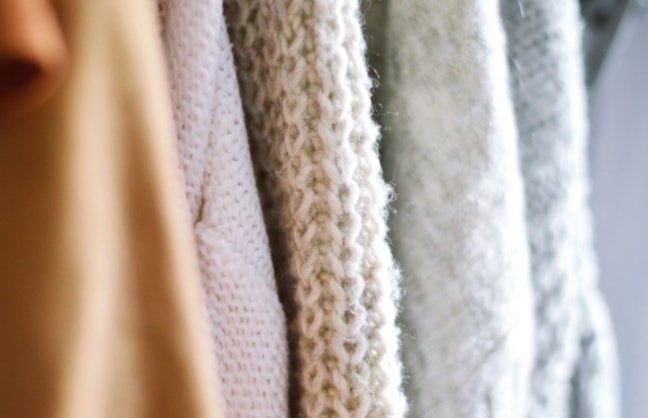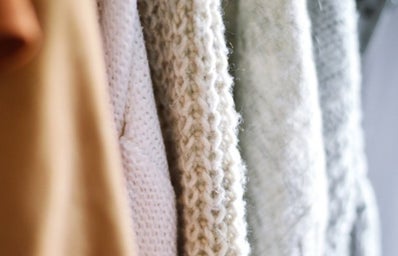In the era of “fast fashion,” the art of caring for your clothing is not super mainstream. However, whether you’re looking to be more sustainable with your clothing choices or want to get the most bang for your buck, everyone could benefit from learning it. There are many ways to care for your clothes, but it can be overwhelming to know where to start. Luckily, I’m here to guide you; without further ado, here are the top five best ways to get the most out of your favorite clothes!
- Be mindful of the washing machine
-
Laundry: it’s everyone’s favorite weekly chore (heavy sarcasm). Washing clothes is so monotonous that it’s easy to forget that it has a direct impact on a garment’s lifespan— but it does. As a general rule, washing clothes in cold water, on the shortest cycle possible, is the best way to ensure your favorite items remain unharmed. This is less pertinent with thicker materials such as fleece or towels but is especially important to remember when dealing with delicate items such as athletic wear. Materials such as wool and silk should always be hand-washed, and delicates such as lingerie should be washed in a mesh bag and spot-treated. Finally, turning your garments inside out before throwing them in the wash helps preserve printing on t-shirts or sweatshirts. By following these simple steps, you extend the lifespan of your clothes and ensure that they look their best for years to come.
- limit dryer usage
-
Machine dryers are great for creating piles of soft, warm clothing to bury your face in (that can’t just be me, right?). Outside of that, they can be very harmful. To preserve the color, texture, and fit of your garments, it’s essential to be informed of the best drying practices. Generally, the “regular” setting on most dryers should only be used for heavy items such as denim, sweatshirts, and towels; otherwise, opt for a lower-heat setting such as “permanent press” or “delicate.” Certain fabrics— such as nylon, rayon, wool, and silk —should be left to air dry. To make this process easier, try grouping your loads by fabric type; your clothes will thank you.
- invest in a fabric shaver
-
Once upon a time, I donated clothes I loved because they were covered in fabric pills. I had no way to get rid of them—until I found a cheap fabric shaver at Walmart, and my life changed forever! Buying a fabric shaver allowed me to restore my favorite clothing items to their former glory and give life to thrifted treasures that just needed a little TLC to be super cute. Cheap and able to be found in most retail stores, fabric shavers are one of the easiest ways to prolong the life of your clothes. Don’t miss out!
- Learn basic sewing TECHNIQUES
-
If you’ve never gone out in public only to find a hole in your pants (that, yes, has been there all day), consider yourself lucky. What’s almost worse than that is getting home and realizing that not only have you publicly embarrassed yourself, but your favorite pair of leggings are now tarnished. That said, a small tear or missing button doesn’t have to spell doom for your clothes. Learning fundamental sewing techniques can save lightly tattered garments that are otherwise perfectly wearable. Check out this guide for a step-by-step mending tutorial; A basic stitch can be the difference between a piece of clothing lasting two months and two years!
- avoid fast-fashion brands for new clothes
-
There are many, many reasons why buying from fast-fashion brands isn’t sustainable. Still, one of the most egregious issues with fast-fashion brands is their contribution to pollution and textile waste. Designed to be “trendy” and cheaply made, out of the 100 billion fast-fashion garments produced annually, 87% will end up in a landfill. The fast-fashion industry is also responsible for 10% of total global carbon emissions, around 20% of industrial water pollution, and 15% of total plastic use. Though shopping through fast-fashion brands can be challenging to avoid, opting to thrift when possible is more sustainable for the planet and your closet.


